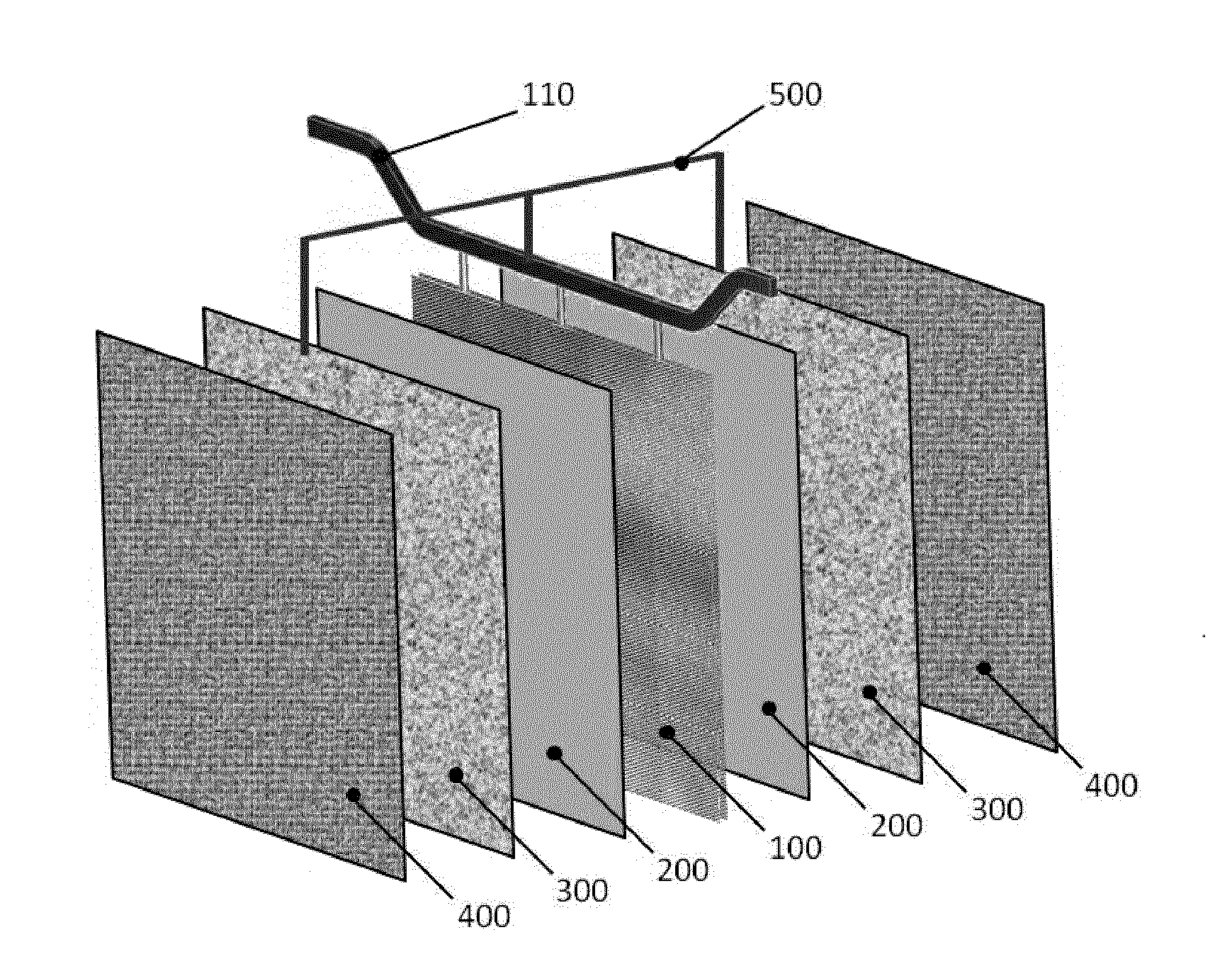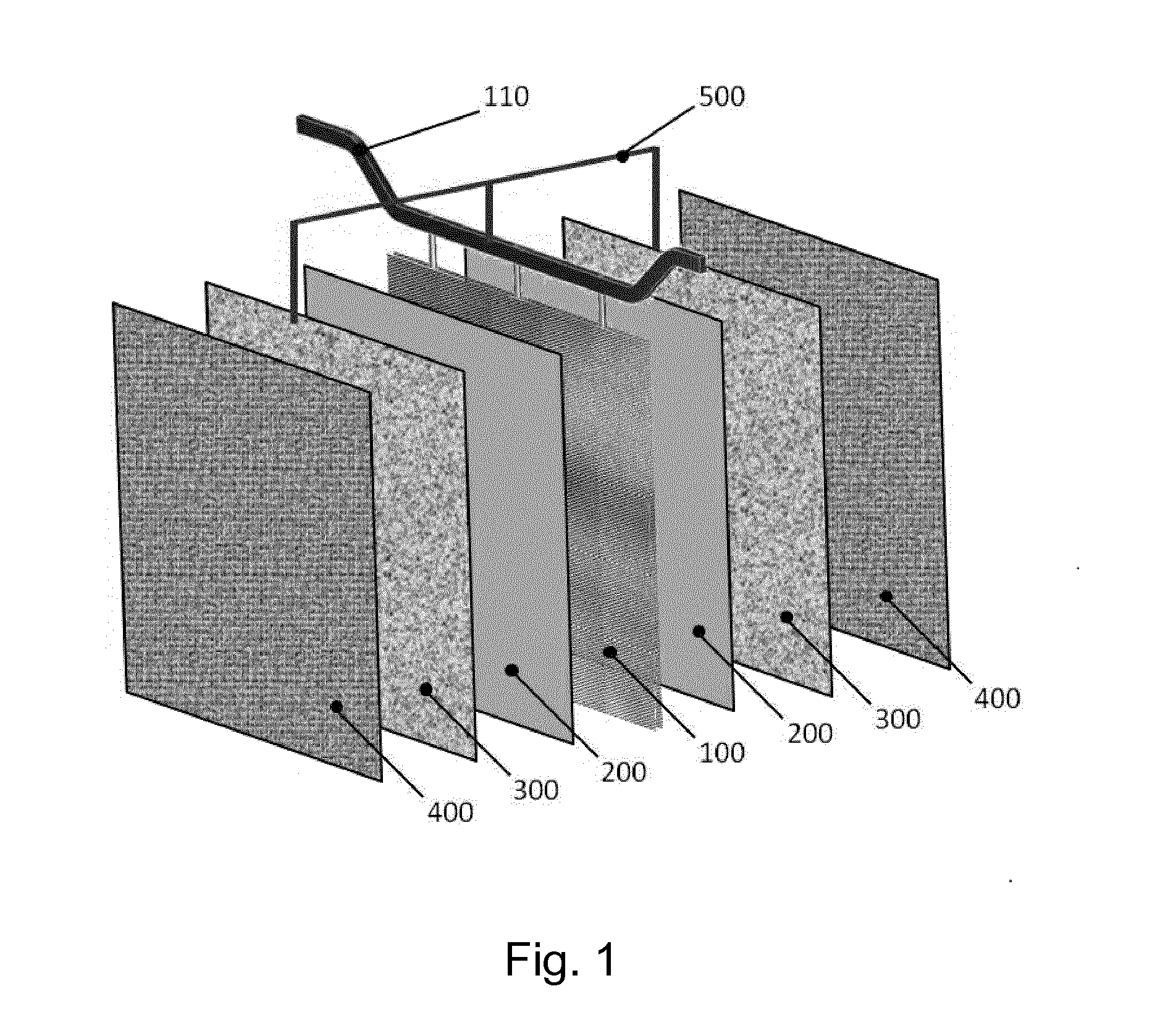Electrolytic cell for metal electrowinning
a technology of electrowinning cells and electrolysis components, applied in the field of electrowinning cells, can solve the problems of short-circuit current flows, achieve optimal electrical resistance, increase conductivity, and high overvoltage
- Summary
- Abstract
- Description
- Claims
- Application Information
AI Technical Summary
Benefits of technology
Problems solved by technology
Method used
Image
Examples
Embodiment Construction
[0016]A laboratory test campaign was carried out inside a single electrowinning cell having an overall cross section of 170 mm×170 mm and a height of 1500 mm, containing a cathode and an anode. A 3 mm thick, 150 mm wide and 1000 mm high sheet of AISI 316 stainless steel was used as the cathode; the anode consisted of a titanium grade 1, 2 mm thick, 150 mm wide and 1000 mm high expanded sheet, activated with a coating of mixed oxides of iridium and tantalum. The cathode and anode were positioned vertically face-to-face spaced apart by a distance of 40 mm between the outer surfaces.
[0017]Inside the gap between the anode and cathode, a screen consisting of a titanium grade 1, 0.5 mm thick, 150 mm wide and 1000 mm high expanded sheet coated with a layer of 21 g / m2 of tin oxide, was positioned spaced apart by 10 mm from the surface of the anode and electrically connected to the anode through a resistor having 1 Ω of electrical resistance.
[0018]The cell was operated with an electrolyte co...
PUM
| Property | Measurement | Unit |
|---|---|---|
| current density | aaaaa | aaaaa |
| electrical resistance | aaaaa | aaaaa |
| mutual distance | aaaaa | aaaaa |
Abstract
Description
Claims
Application Information
 Login to View More
Login to View More - R&D
- Intellectual Property
- Life Sciences
- Materials
- Tech Scout
- Unparalleled Data Quality
- Higher Quality Content
- 60% Fewer Hallucinations
Browse by: Latest US Patents, China's latest patents, Technical Efficacy Thesaurus, Application Domain, Technology Topic, Popular Technical Reports.
© 2025 PatSnap. All rights reserved.Legal|Privacy policy|Modern Slavery Act Transparency Statement|Sitemap|About US| Contact US: help@patsnap.com


